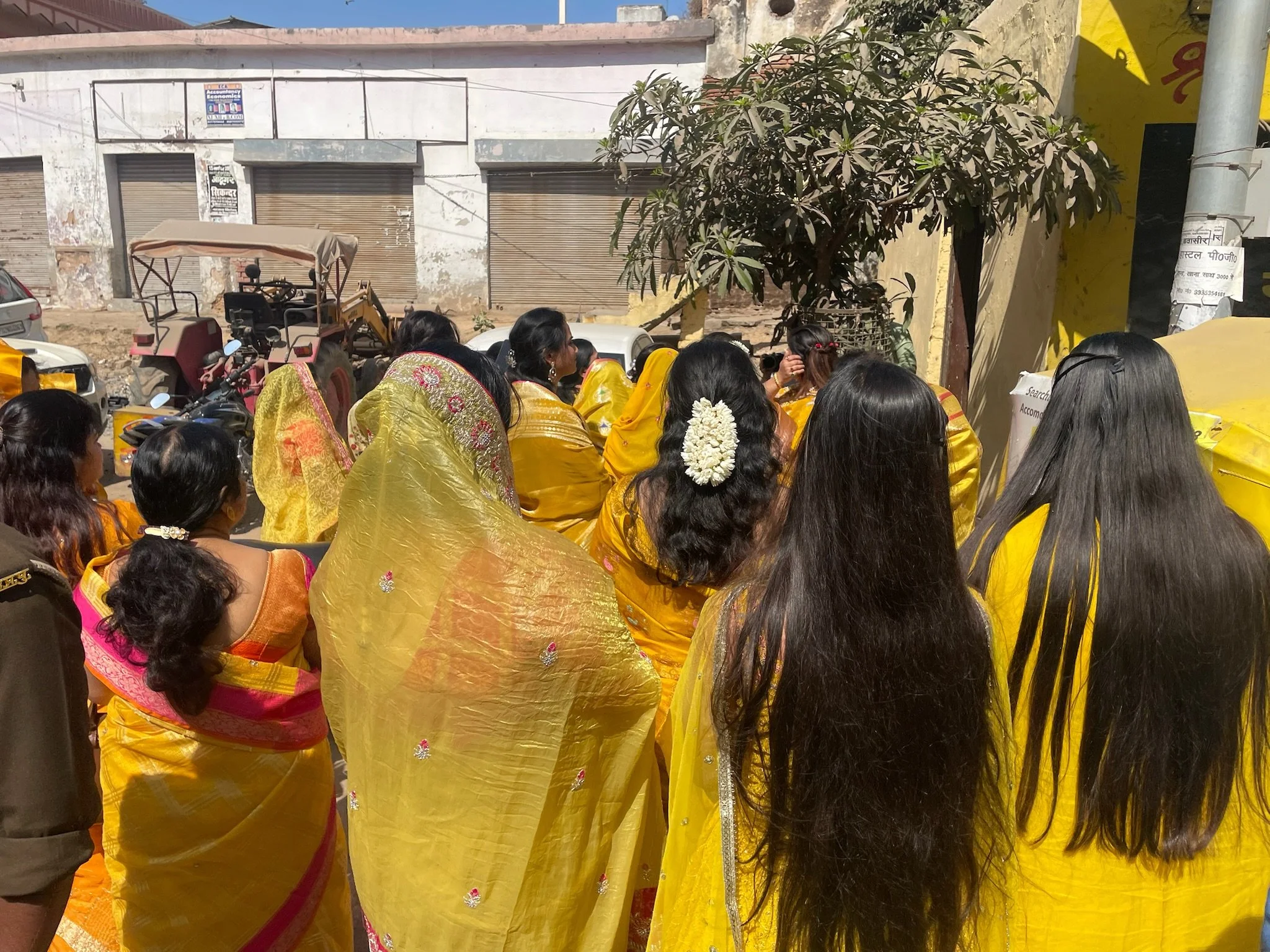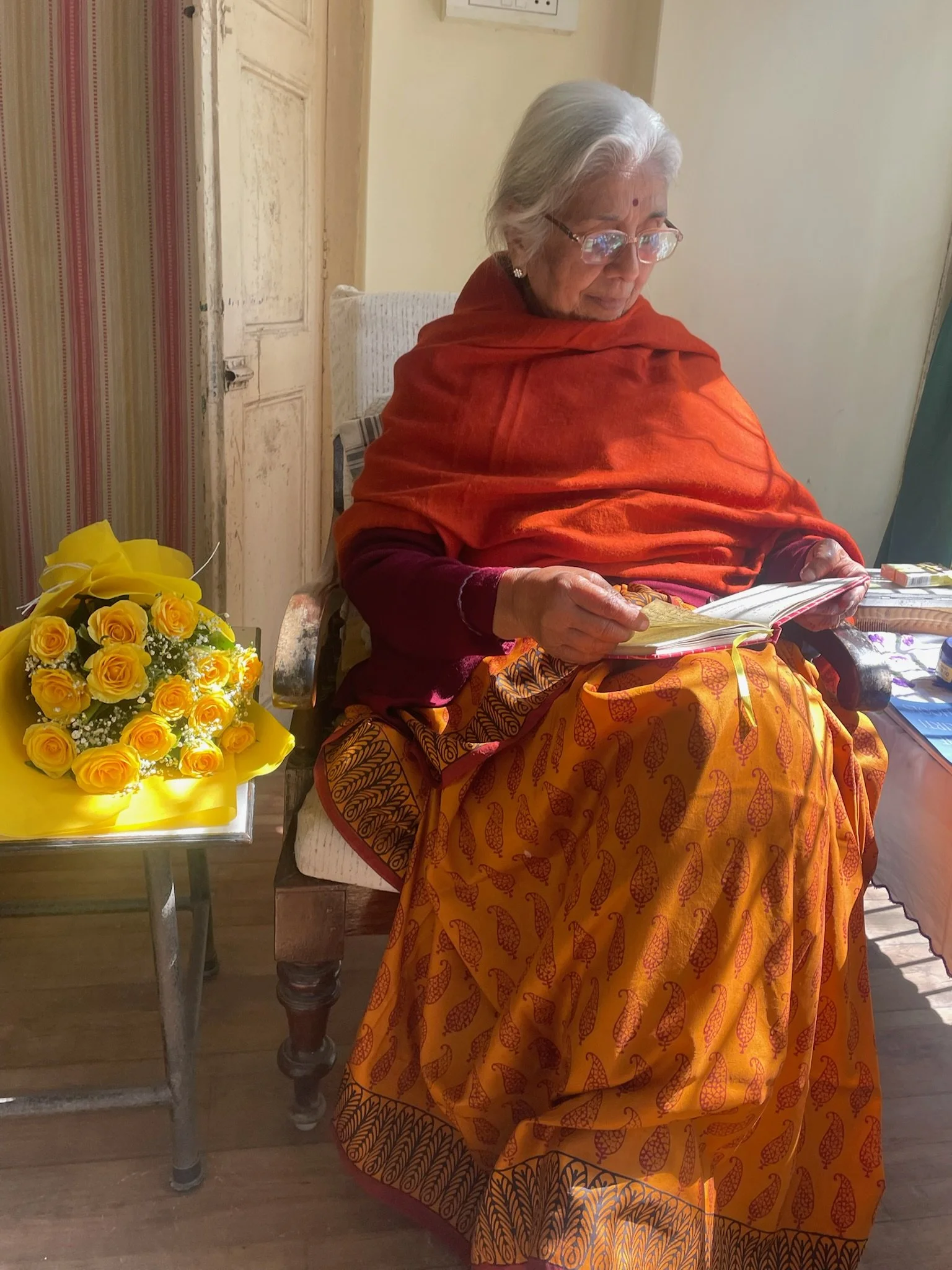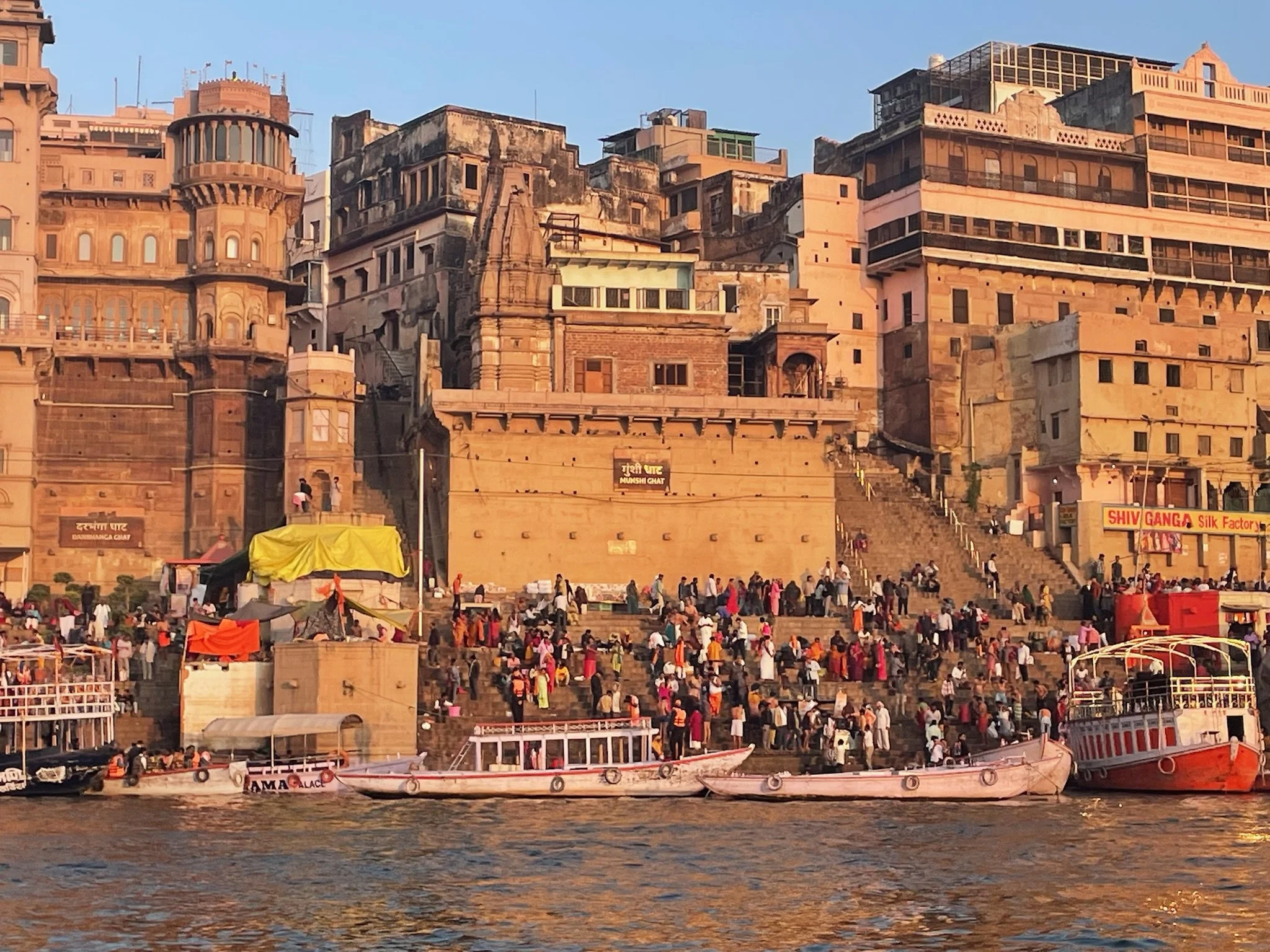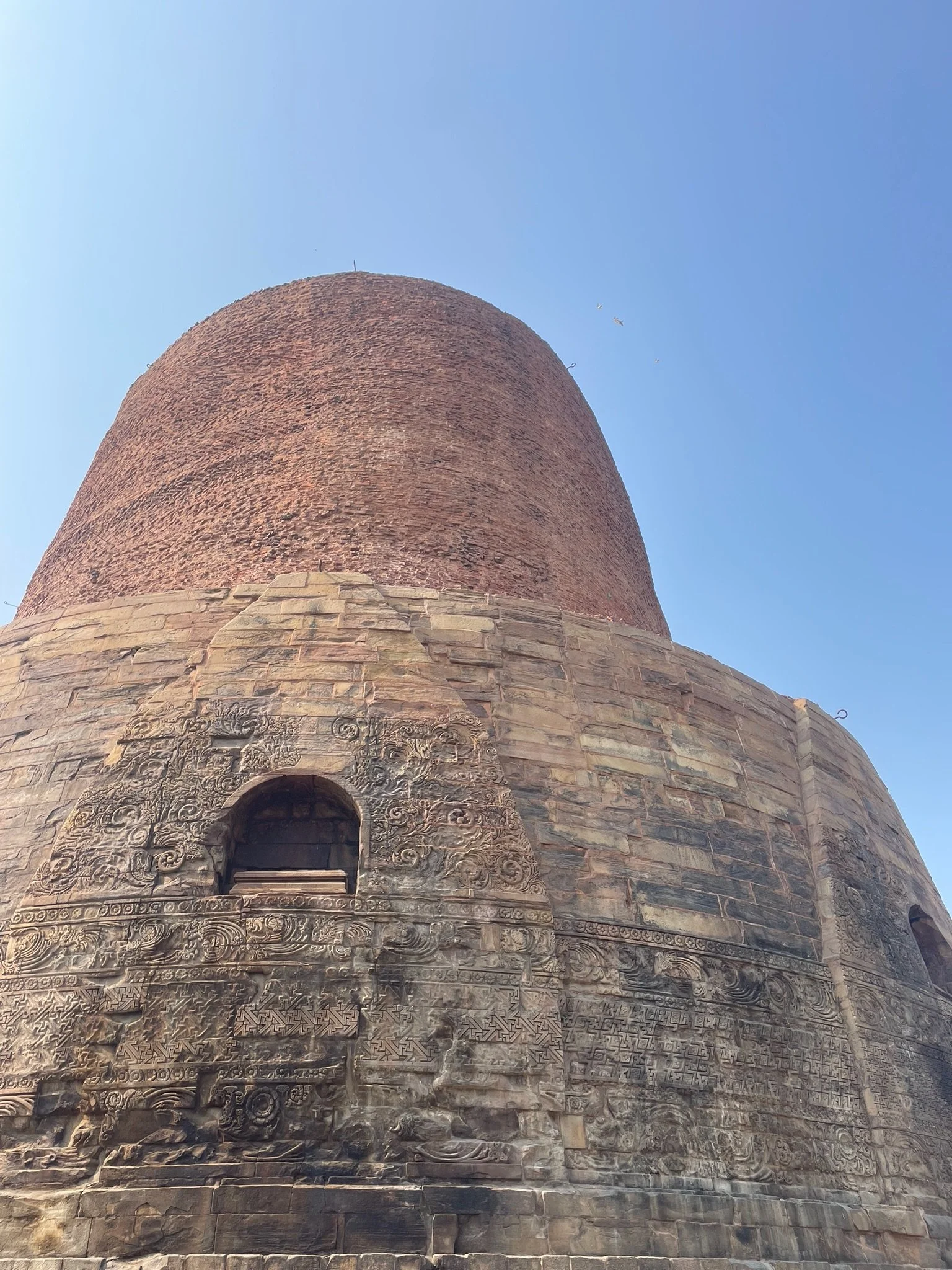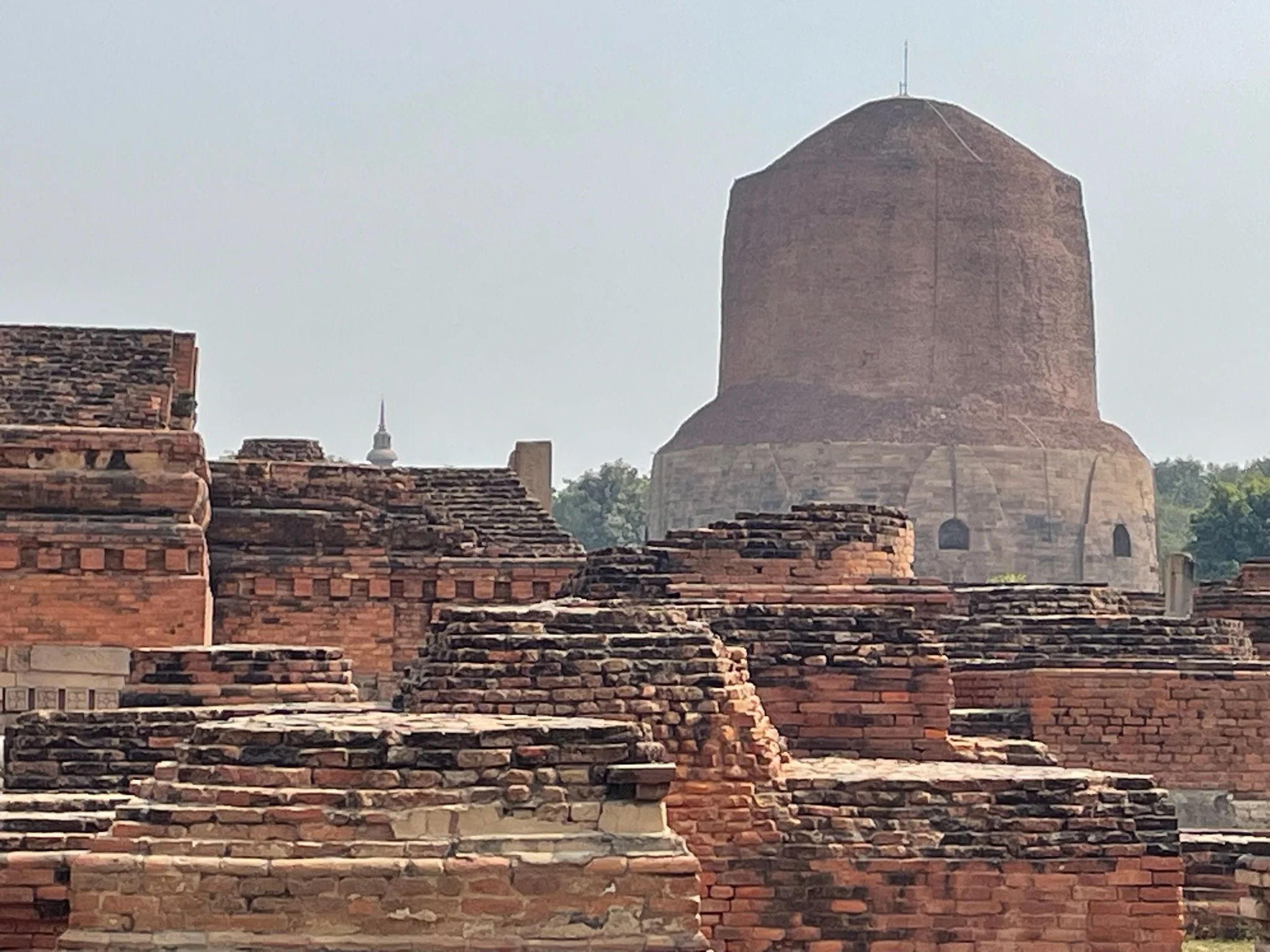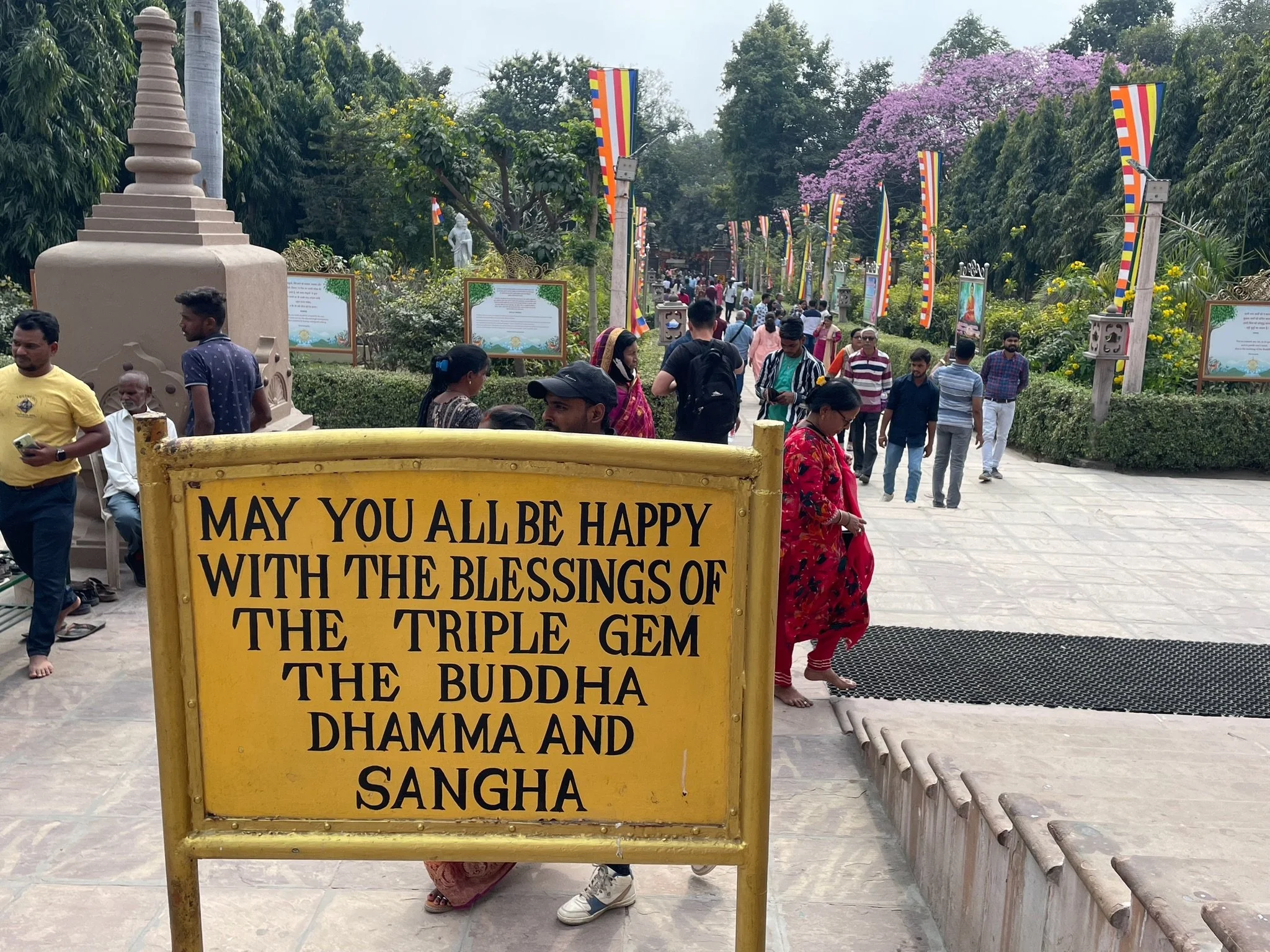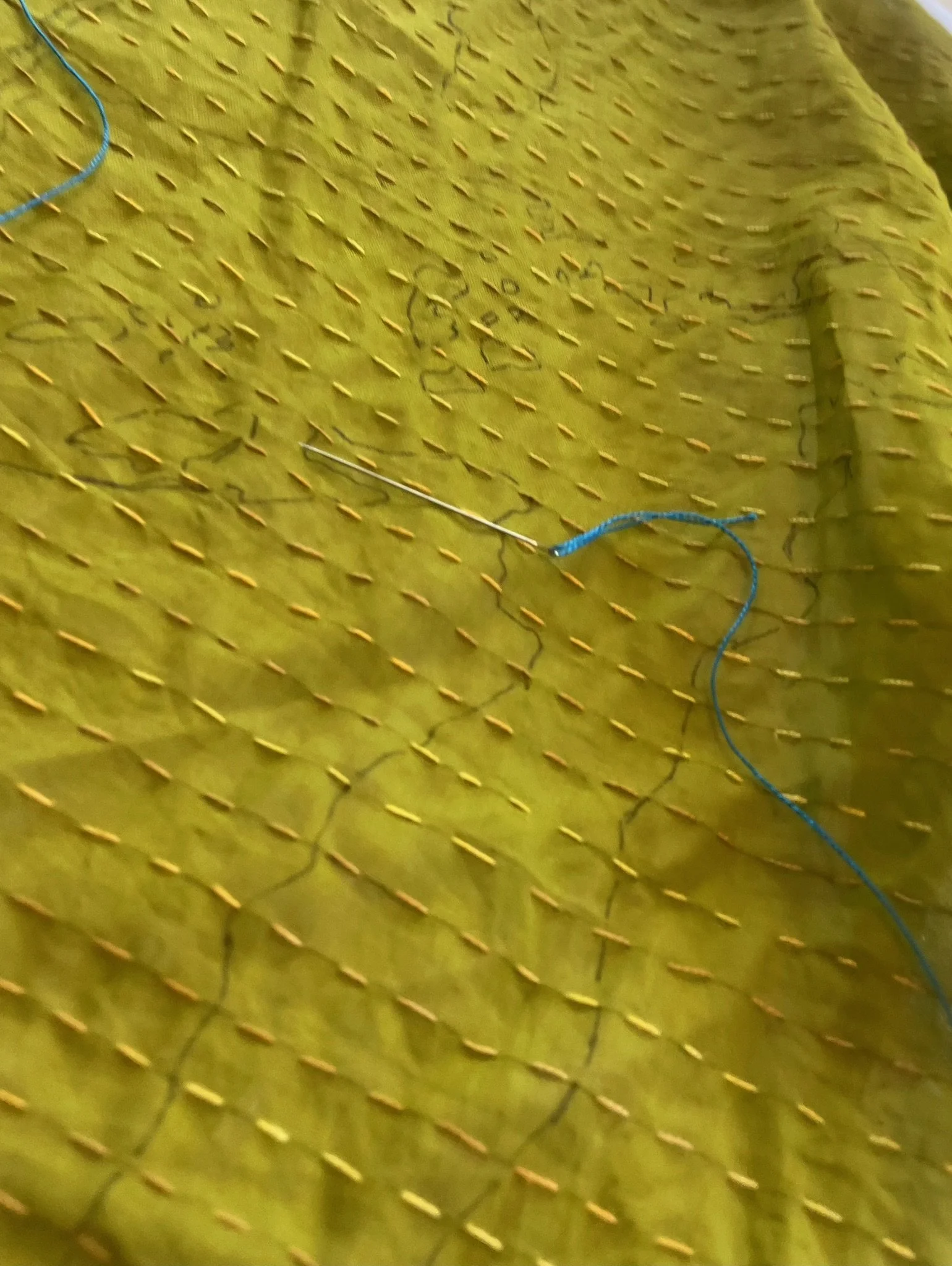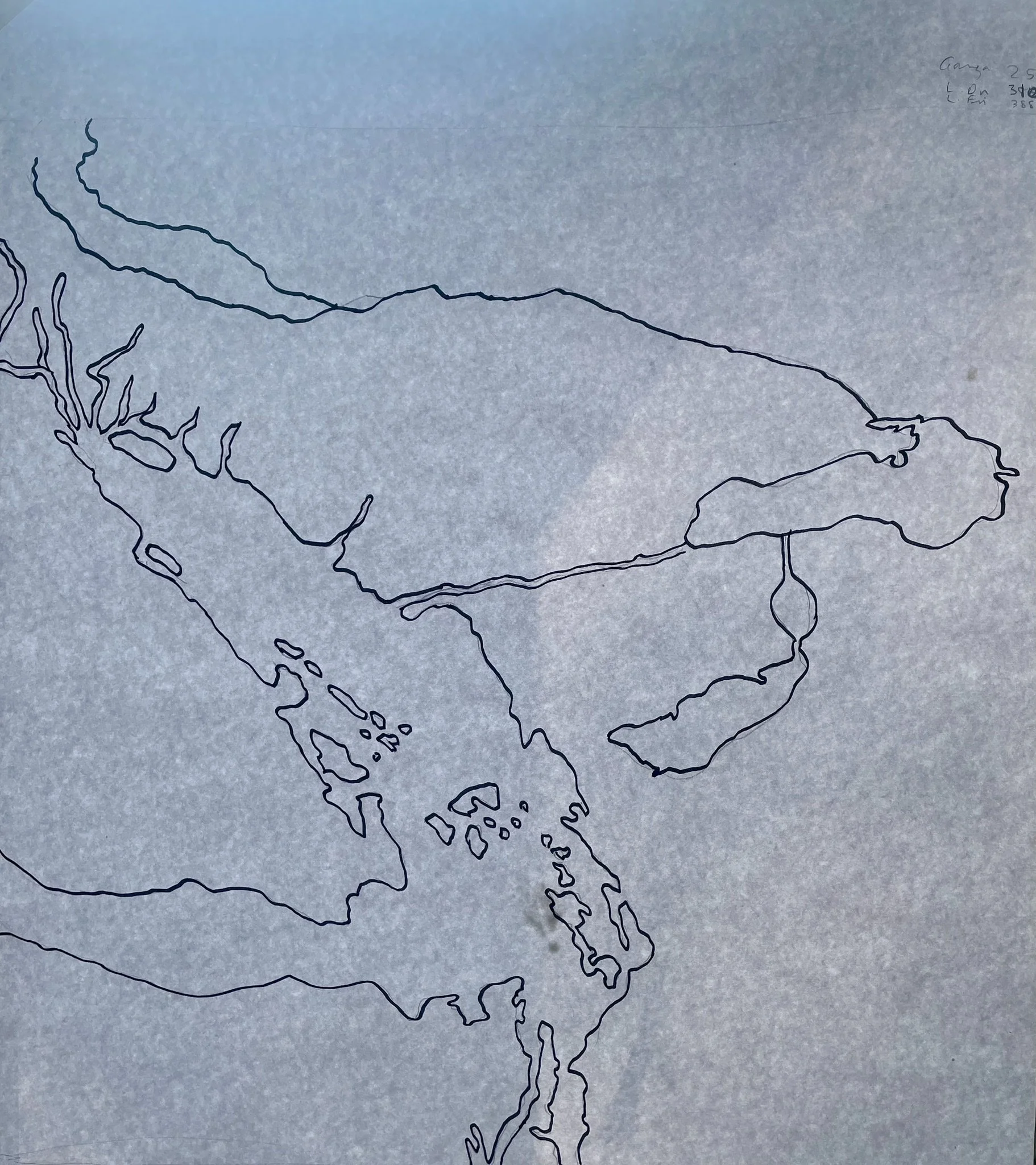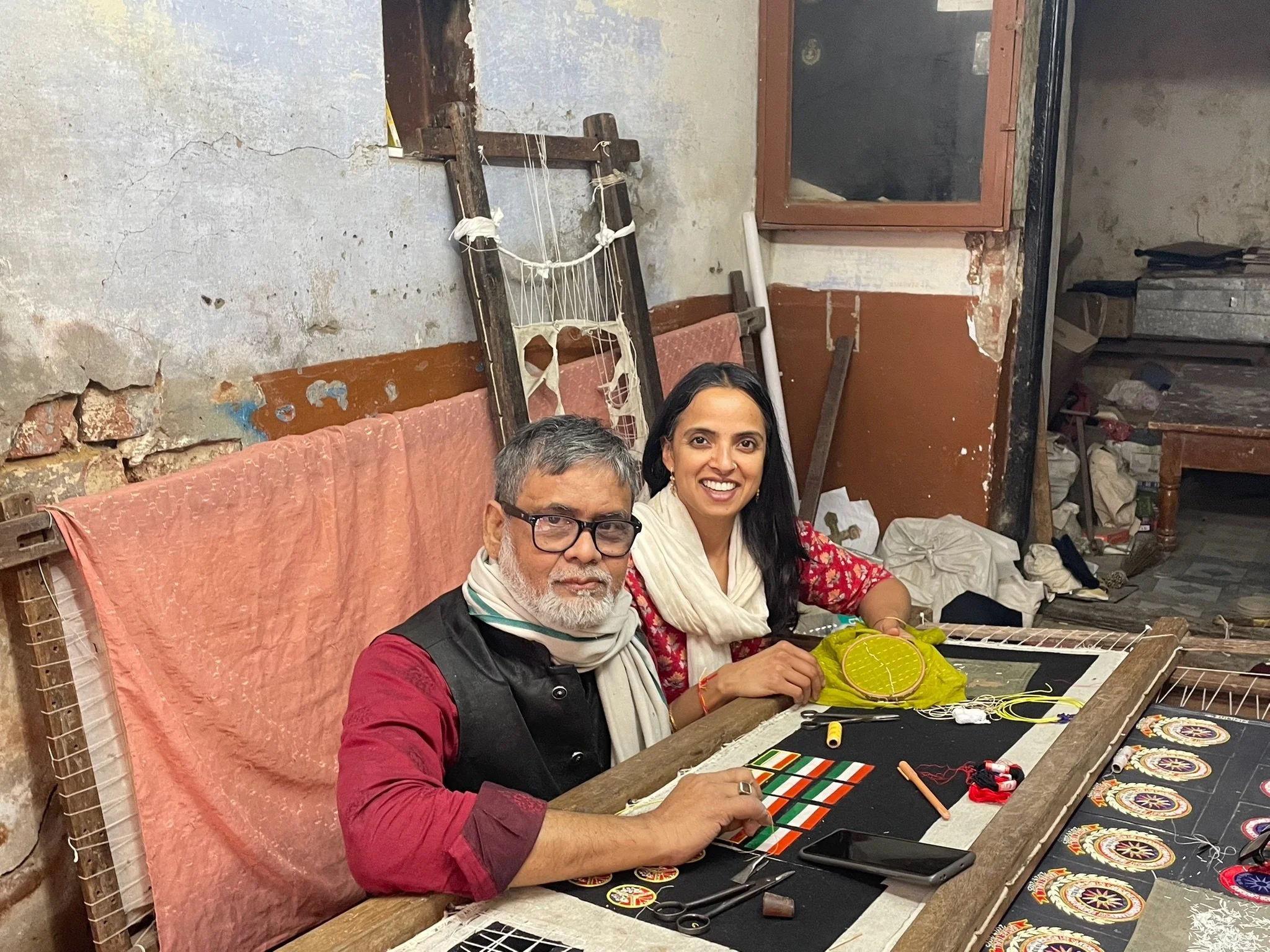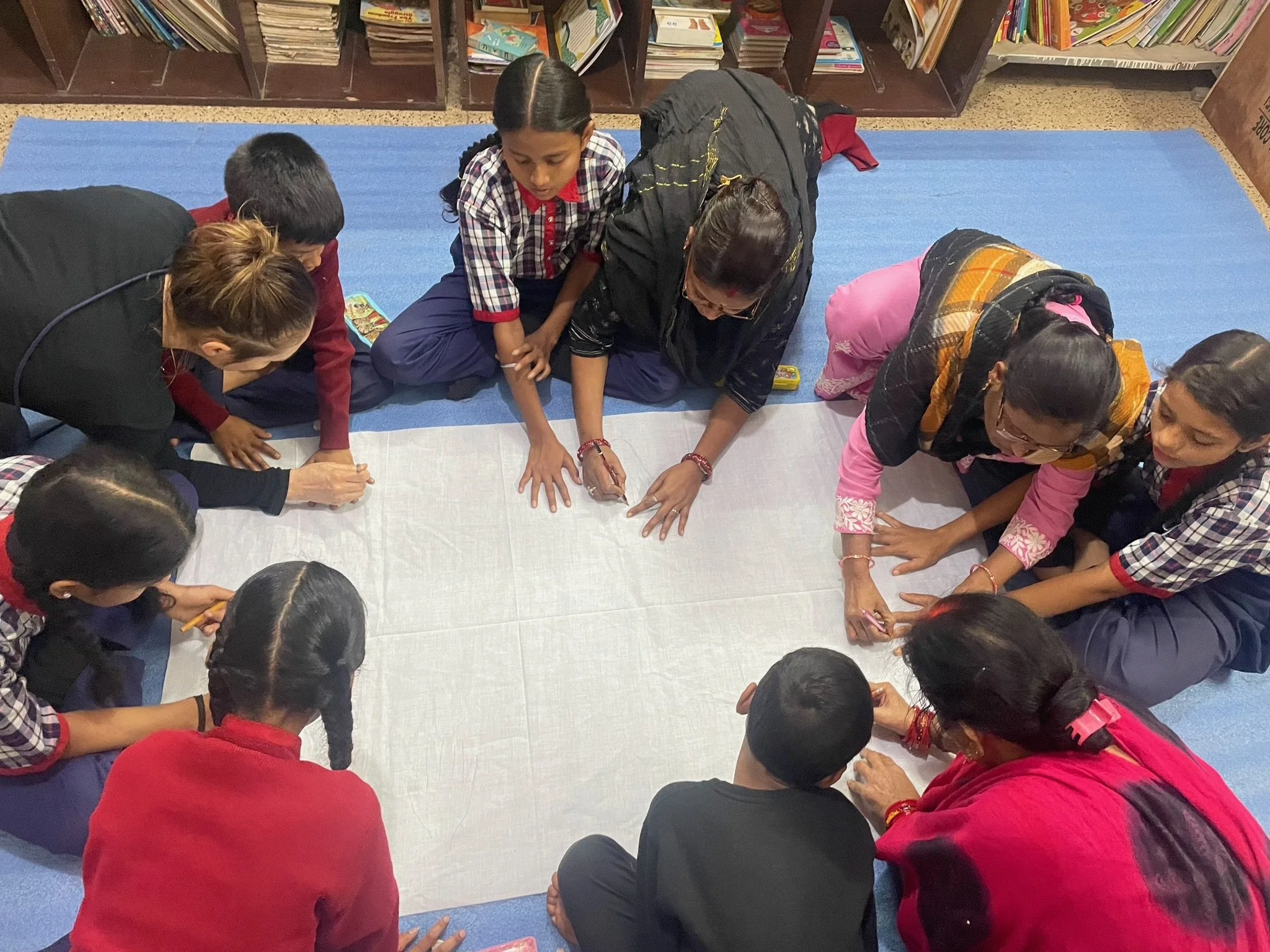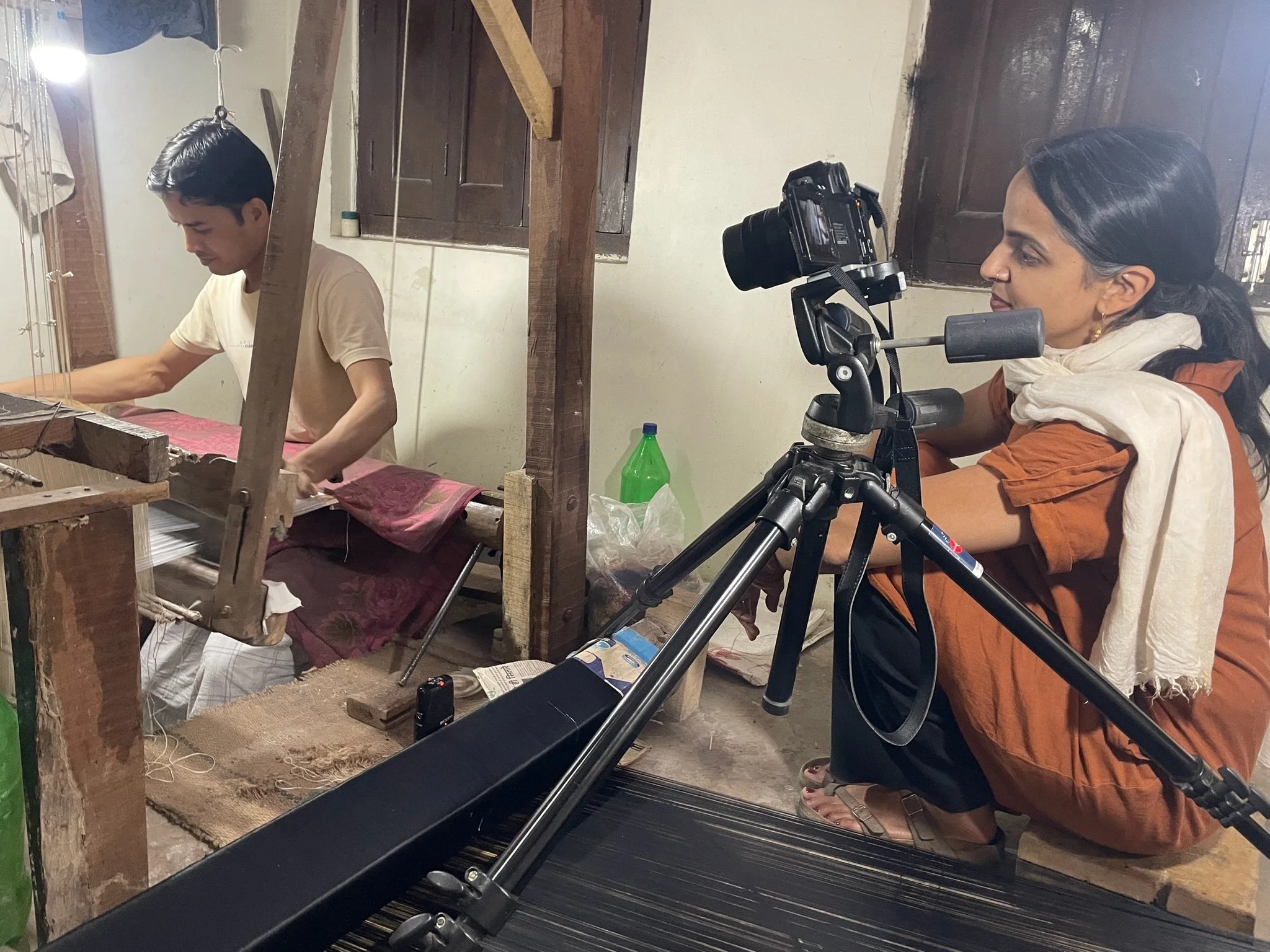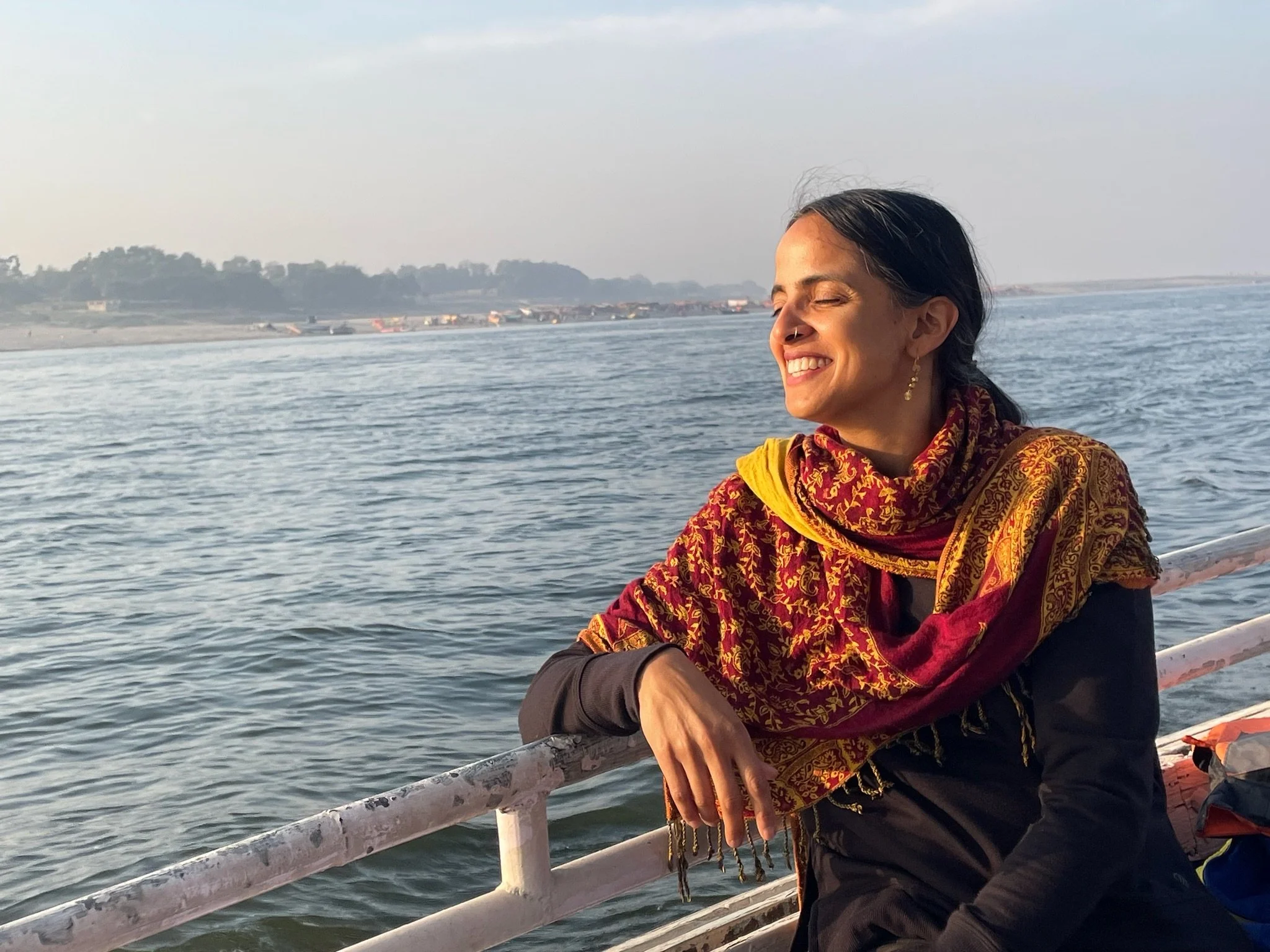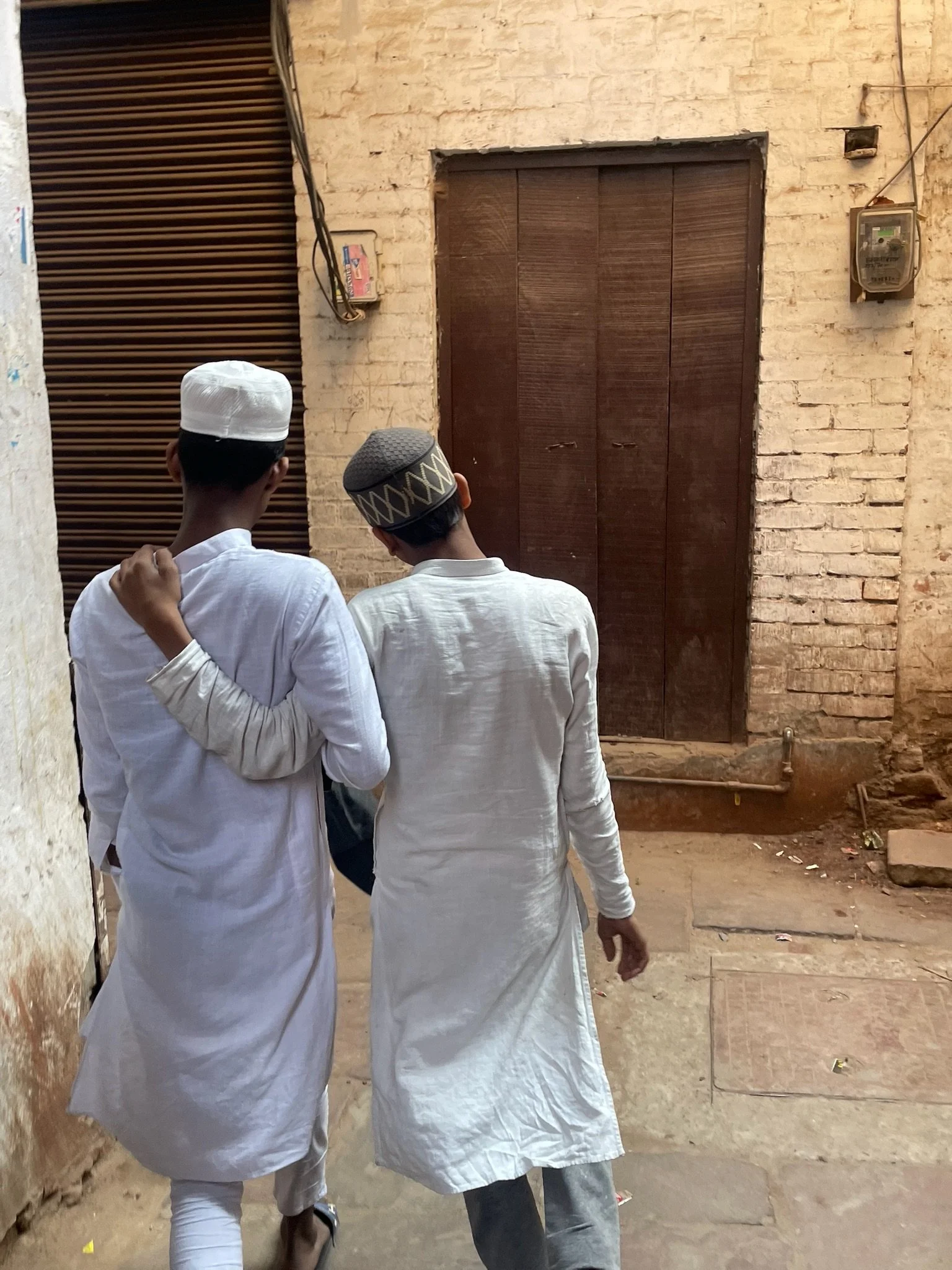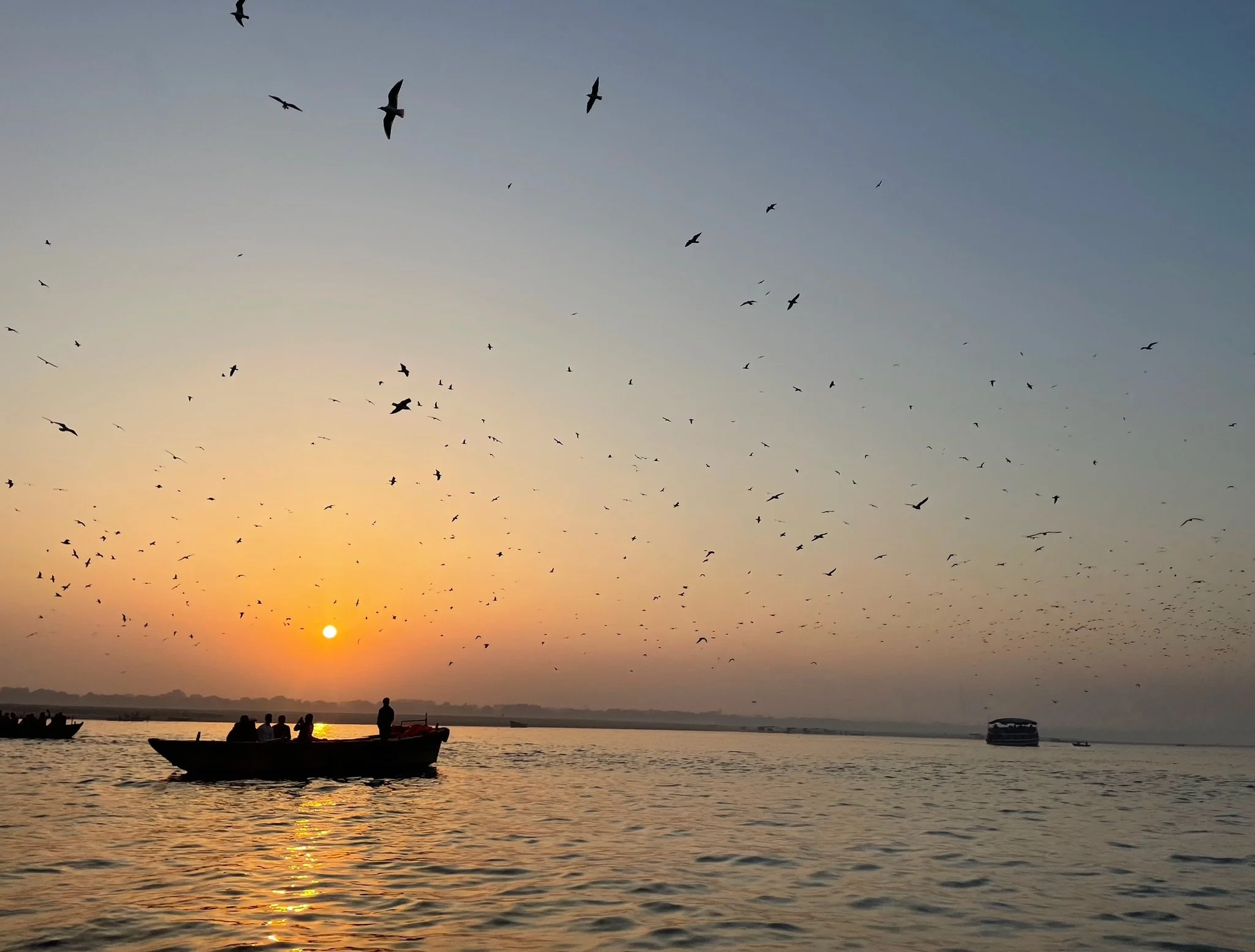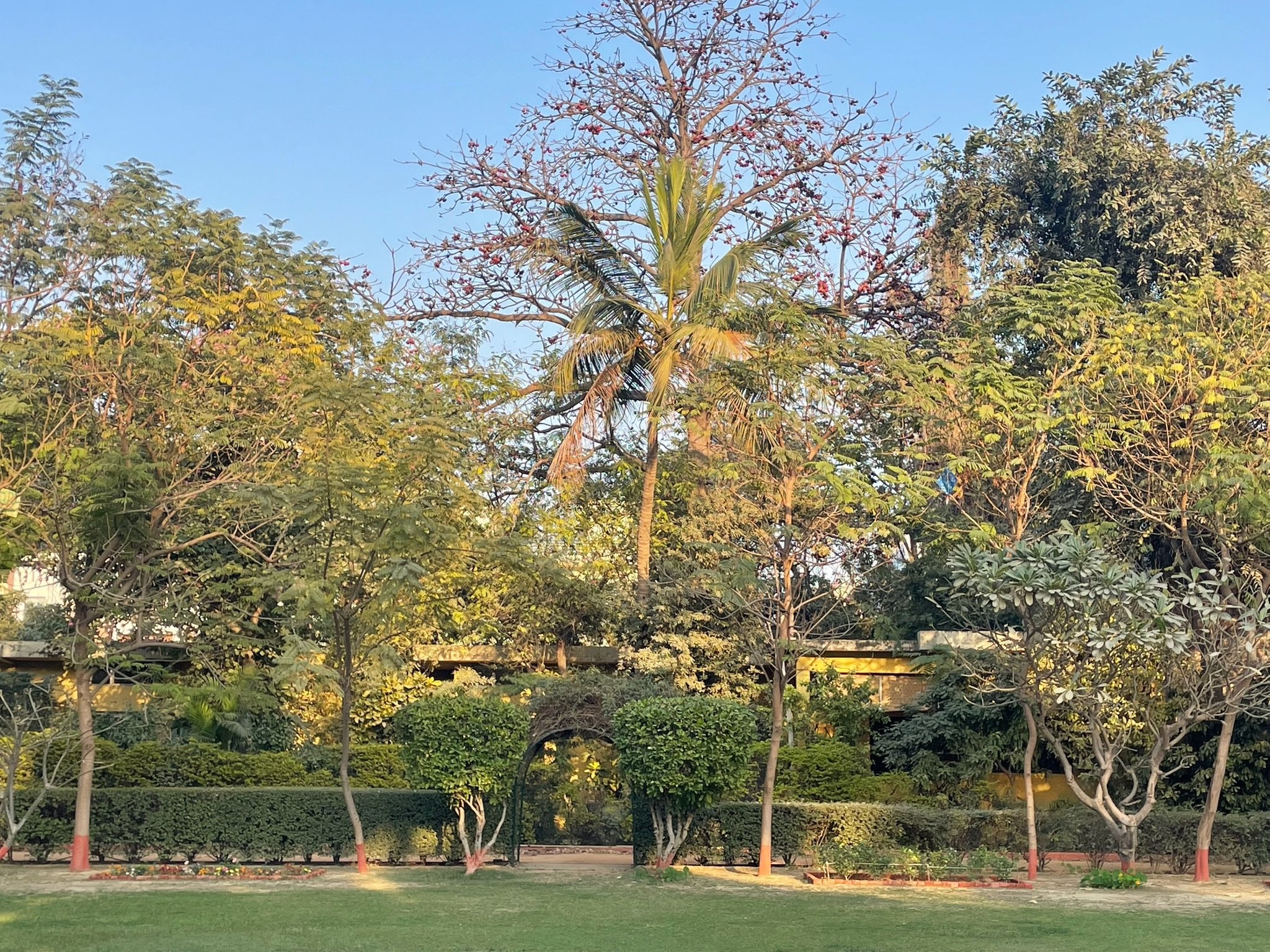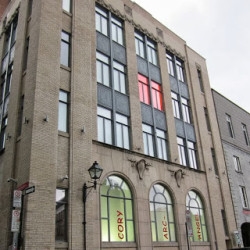Reflections from my Artist Residency Feb 2025
Time is an elusive companion. Here I am, en route home from my month-long residency in Banaras. I was nervous about being away for so long, and unsurprisingly, my time in India flew by.
By Basant Panchami, the spring festival when people wear yellow mirroring the mustard fields at this time of the year, the city has warmed. All month, the garden continued to be a refuge for me. With the heat, the jasmine flowers were emanating their sweet, musky scent through my open windows, making my walking meditations intoxicatingly pleasant! Thank goodness for this beauty as the din of traffic was non-stop throughout the city until I left.
Funnily, my whole residency was during the busiest time in Banaras, ending on Shivratri, the day after I left! A big part of my experience was learning how to stay centred and grounded in the midst of chaos and noise. There was a particularly tender visit with Manju didi (Kabir/non-dualism mentor) when I confessed my frustration: “how can I make art in this chaos?”, "I can barely get around and it takes so much time to recover after an outing?!” She reminded me that the making happens when it’s the right time. My job is to attend to what’s present and be in inquiry, to stay in process rather than push toward doing. Tears, relief, letting go of expectations, I left that visit open and softened, walked across the Theosophical Society’s quiet grounds, then stepped back into the main road and joined the crowded street: people walking shoulder to shoulder, women and men with luggage on their heads, shoulders, dust and dirt flying around, heat, and honking. Yet, I felt an inner stillness and joy that is rarely present for me in such loud external spaces. I was beaming and brimming with joyful tears as I walked in the flow of humanity, becoming and allowing all the messiness, joy and fullness to move through me.
If you can’t beat them, join them. After that, I decided to throw caution to the wind and get around the easiest way possible - by Uber motorbike. There were many hair-raisingly exhilarating and frightening rides where I laughed all the way to my destination (otherwise I’d be crying!) and leaned into trusting the flow of traffic and my driver. There’s such a finessed way of driving in India, it certainly looks like there’s no rules, but most drivers are keenly aware of each other, moving like a school of fish, rather than individual drivers. This means we get really close to each other and touch shoulders or bumpers sometimes but it works somehow. Not quiet, not always efficient, but like one body moving together, not afraid to get close.
Basant Panchami yellow - welcoming spring
Travellers walking alongside traffic
Looking back on my month, my friendship and time with Manju didi was one of the biggest highlights of my residency. Each week we sat in her garden talking about creative and spiritual practice. She reminded me to be connected to my art without reinforcing a separate “me”: to ask instead how the divine wishes to express itself through me. When I’m trying to figure out my project and struggling, it's often because I am attached to my own ideas of how it “should” be. Allowing, receiving, flowing - these are the qualities she calls essential. She is a major nature lover and I read her a few Mary Oliver poems, which delighted her. It was so lovely to introduce her to a new poet and someone I love a lot. On our last visit we exchanged poems and spiritual conversation in her garden, soaking in the sunshine and birdsong. Bliss! Anand! Tears and joy flowed as we gazed into each other’s eyes, our words seemed to touch a bigger, mysterious truth. I am deeply grateful for this friendship and time with her. She blew me away when I asked her: do you go to visit the ghats or call yourself a Krishnamurti or Kabir follower? How do you identify your practice? She answered “I don’t have to go anywhere to be in devotion, no ghat or temple, it’s all inside me. And I don’t follow anyone, why limit myself? There are so many teachers, why label myself?” How incredible! In a world asking us to define and label ourselves and to run to external places to worship, this woman is radically reminding me that worship and liberation is possible right where I am. Nowhere to go but in.
Sharar asa fana amadah bar khez
Bayafhsan daman-o-azadah bar chez
Rise to be extinguished in an instant like a spark
dust your shirt, be free.
- Ghalib
Manju Didi reading me a poem
Morning bathers at the ghats of Banaras
Another highlight of my time in Banaras was visiting Sarnath, where Buddha gave his first sermon after attaining enlightenment under the Mahabodhi tree in Bodhgaya. After weeks of walking toward Varanasi, he rejoined his companions who had once embraced extreme renunciation at the deer park in Varanasi/Sarnath and shared his teachings of the middle path and the four Noble Truths. Visiting this sacred site was very emotional for me. It was so peaceful and moving in contrast to the city’s intensity. The site radiated stillness: monks gathered on the grass chanting, space, greenery, ruins of an ancient monastery and a palpable sense of reverence and quiet. I sat under a tree, meditated, and soaked in the energy of this sacred site. The very ground where the Wheel of the Dharma began to spin, the teachings that have offered me so much inner freedom.
I also got to visit a Kabir Ashram/Museum that has Kabir’s original loom, his water matka, the tomb of his parents and a shrine. So many teachings everywhere in our world and wise ones to learn from.The boatman on the Ganga, the kind motorcycle driver offering extra time and care, the strangers who let me hop into their rickshaw and ride all the way home on their dime when I couldn’t get a ride, the kind smile from the young woman peering out her dark doorway in her small brick home next to the gas station on the busy road.
Moko kahan dhoondhe re bande, main to tere paase mein
Where do you search for me? I am within you.
- Kabir
In the studio, I continued to stitch and research images of the waterways that I am connected to. The Ganga-Yamuna confluence merging into Lake Ontario/Niagara River, the Salish Sea flowing into the Great Lakes, and the Ganga Yamuna into the Salish Sea. I transferred this drawing onto fabric to embroider and refreshed my zardozi technique with Majid Bhai - an embroiderer delighted to host a fellow Muslim artist. We stitched in his tiny workshop with the local imam reciting Qur’an and chatted about our lives. They were very curious about my life and my family. I know that I could do this, visit as a woman with these men in their shop, being an outsider allowed me to bend certain rules. They were so delighted to call me a sister and insisted on chai each time, offering me gifts of local medicine and embroidery supplies to take home. It’s a gift to be at the edge, to be an outsider moving between cultural centres, as it gives me the opportunity to break “rules” and step into these men’s lives and spaces with curiosity and care. I know they were intrigued by my family, that I had married a man of English/Scottish/Irish descent and that our that our household held a mixture of cultural and spiritual inheritances. There may have been judgement, yet there was also respect and curiosity. Cultural exchange unfolded between us, our perceptions widening as we stitched and got to know each other.
This shift in perception and questioning occurred again when I offered an embroidery workshop at a local non-profit school run by Petra’s friend, my residency host. The school serves mostly poor Muslim children from a city slum. We did introductions and the kids were surprised that part of my identity is Muslim. “You don’t sound or look Muslim, ma’am!” said one child. I asked “what does a Muslim look and sound like?” They were flabbergasted, surely Muslims were just like them.? So many conditioned beliefs we all carry around language and appearances. The workshop was a joy; to be around the energy of the children, so happy to be learning. We talked about the calming effect of stitching; many of them had never stitched before. As we stitched, we shared what calms us, where and how we feel safe, many of the students named school as their safe space.
I was able to visit with Hasin Mohamad Ji again and spend some time filming Ishtiaque, the young weaver and recording sounds. The sound of the handloom has a beautiful rhythm and I hope to incorporate these sounds and recitations into an upcoming installation.
Hearing the loom as a time keeper, weaving time, memory, life. How do plant relatives, water, ancestors and consciousness weave us into the beings that we are becoming? What is the golden thread that binds it all? I have so many more questions and inquiries from everything that I’ve witnessed and experienced here. How to give shape to the mystery and light all around me?
The morning light on the Ganga, rising sun illuminating crowds of boats and bathers, ancestral joy and gratitude
Manju Didi reminded me that Kashi/Banaras is not a city to ask questions of, it’s a city to experience. I heard this from other people too. Kashi will give you what you need, a teacher offering lessons as you are ready. As I digest this past month, I am grateful for all the beings that held me here and hold me at my home on Lək̓ʷəŋən Territory. I missed Chris, Aisha and Cairo, and I love them all so much for supporting me to go and do the work I need to do to connect deeply to my creative practice. I feel so connected to my community in Victoria, and am excited to be back in time for Ramadan to be with my chosen family of beloveds, to be connected to the light and spirit in the land and water where I live.
May all beings be safe and protected during this holy month, may all beings know the truth of oneness, may we all be happy and free.
